TESTING & RACING THE 2025 YAMAHA YZ250FX AT THE IRONMAN GNCC
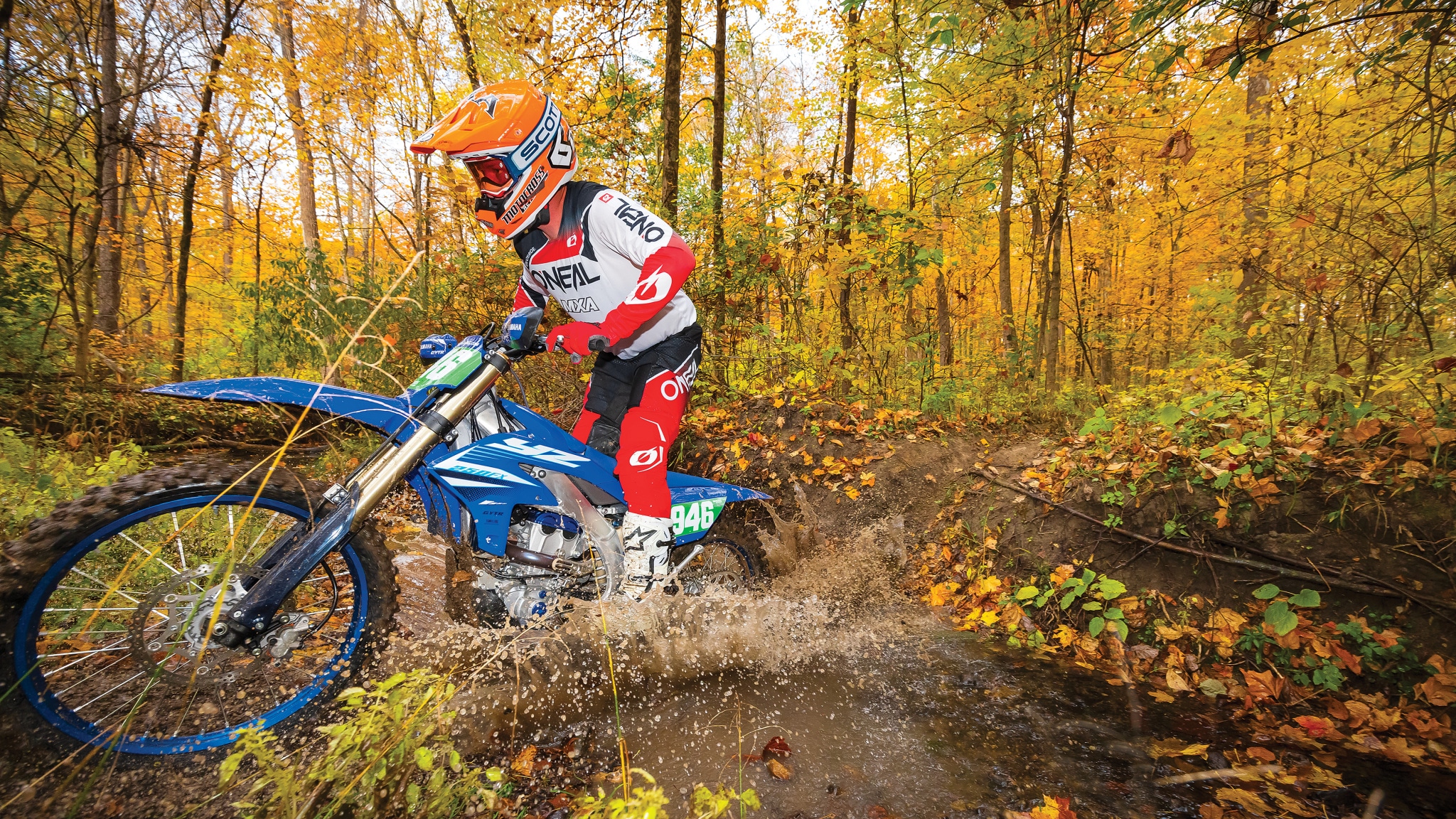 Josh Fout testing the 2025 Yamaha YZ250FX in Indiana.
Josh Fout testing the 2025 Yamaha YZ250FX in Indiana.
I started testing for MXA back in 2015 when Jody Weisel asked me to be a casual weekend test rider. The assignment was to put hours on test bikes and see how they would hold up under racing conditions. As things progressed, I started to learn some proper techniques on the motorcycle, and, most important, I began to pay attention to every word that came out of Jody’s mouth. It started with just sitting back and listening to my father Randel Fout and Jody talk about everything from power delivery to why the shim stack in the fork was off, making it too harsh to work in unison with the shock, to “Hey, let’s zip-tie 40 pounds of weights to the front of the frame and see what happens!” As time went on, I started putting more time in with Jody, digging deeper into how motocross bikes are made to perform. Then I found myself, alongside my father, Randel, as one of Jody’s lead test riders. Then along came Josh Mosiman, my right-hand man and one of my best mates. Josh has helped me exponentially expand my testing career. I helped develop his Twisted Development KTM 300SX for the World Two-Stroke Championship. I’ve developed settings for countless fork and shock combos, and I’ve provided feedback on Jo Shimoda’s factory Pro Circuit KX250.
I would like to claim to be the MXA test rider who rides the most every week, but that’s just not true. Living up in the mountains overlooking Southern California’s coastal plain, I don’t want to sit in traffic to ride tracks like Pala, Perris and Cahuilla Creek during the week when Glen Helen isn’t open. One thing I can claim, however, is that I race more than any other test rider. There are 52 weekends in a year, and it feels like I race 60! I’ve lost track over the years, but between my favorite race series Saturday at the Glen, SRA Grands Prix, and, heck, any races in the Southern California area, I race well over 40 weekends a year. I eat, sleep and breathe motocross, and always will. But, over the years, I have developed a passion for trail riding and off-road racing, too. I’ve dabbled in multiple EnduroCross races, hard enduros and desert races, but have really found my home in West Coast Grand Prix racing. So, when Josh asked me, “Would you like to race a GNCC?” I jumped at the opportunity, never thinking this would be something I would get to race!
“I HAVE BEEN TO A LOT OF AMA NATIONALS AS JOSH MOSIMAN’S MECHANIC, BUT I HAVE NEVER SEEN AS MANY CAMPERS, PIT VEHICLES AND PEOPLE AS I DID AT THE IRONMAN GNCC.”
Yamaha had invited Mosiman earlier in the year to the GNCC season opener at Big Buck to test and race the all-new 2025 Yamaha YZ450FX. He and Trevor Nelson raved about how great the trip was, making me extremely jealous. Then, Yamaha reached out yet again to recruit MXA to test the all-new 2025 YZ250FX at the GNCC season finale—and this time my name was first on the list.
Luckily for me, Josh Mosiman is a busy man. Before I knew it, I was on a flight to Indianapolis, Indiana, with lead videographer, action photographer, graphic designer, and 24 Hours of Glen Helen Ironman finisher Trevor Nelson to test and race this all-new Yamaha. This was a bucket-list trip for me, and I couldn’t think of anyone better than Trevor to have by my side.
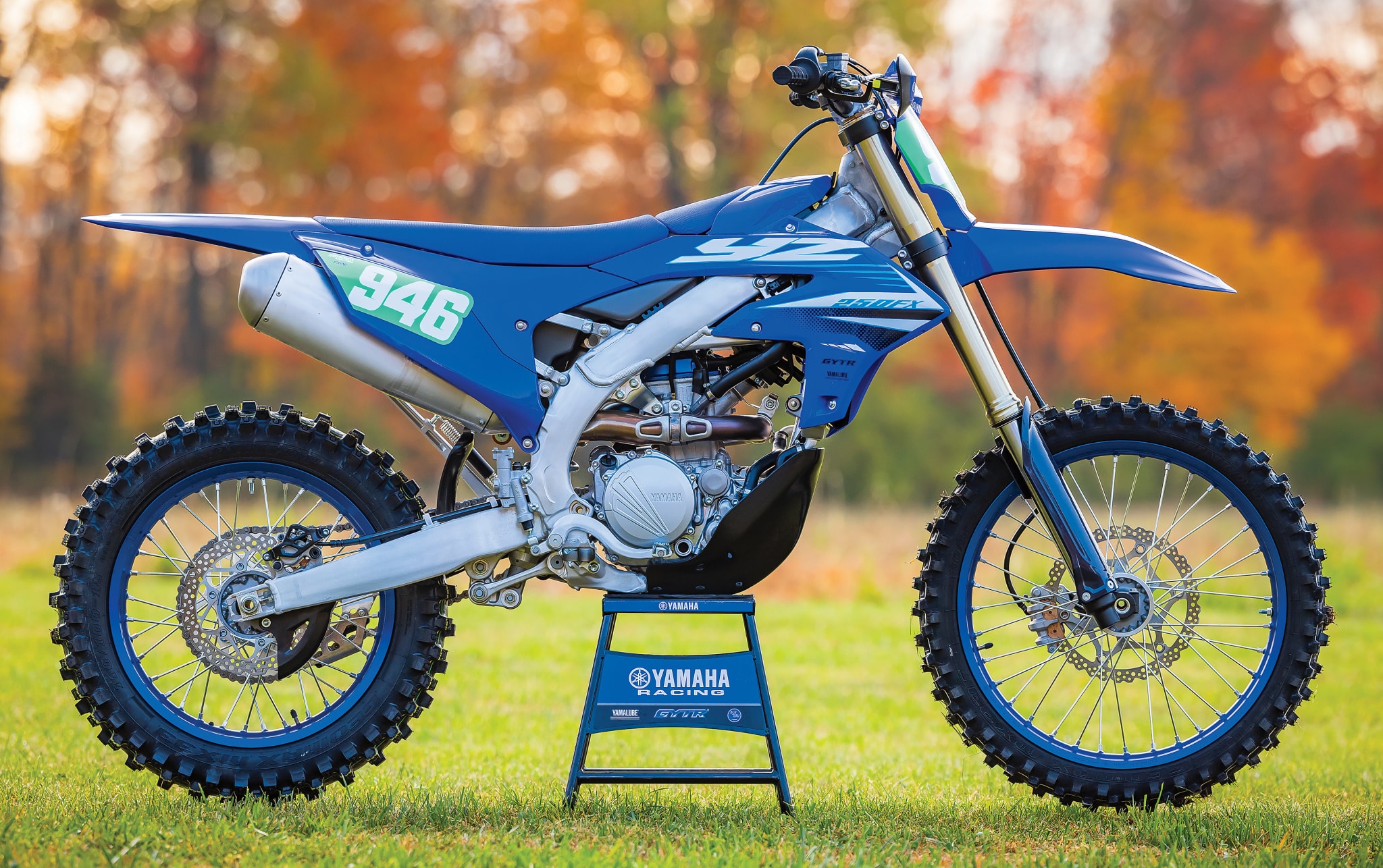 Yamaha updates their off-road models one year after their motocross bikes. The YZ250F was all new in 2024, so they YZ250FX gained the same updates in 2025.
Yamaha updates their off-road models one year after their motocross bikes. The YZ250F was all new in 2024, so they YZ250FX gained the same updates in 2025.
Out of MXA’s large fleet of motorcycles, I always choose to race a 450. The 450 makes it easy for me to be lazy and lug around the track, but also have power at the twist of the throttle. The YZ250F was on my personal podium in the “2025 MXA 250 Shootout,” but the thought of traveling all that way to race a bike that I didn’t feel competitive on had me concerned. Boy, was I wrong to be worried.
The first stop was in Milton, Indiana, where Yamaha had us ride the bike for the first time. It was a privately owned facility about an hour from Ironman. It consisted of three miles of very narrow singletrack, creek crossings, and snotty tree roots, followed by two miles of amazing grass track. It was the perfect testing ground for this all-new off-road machine.
Yamaha’s 2025 YZ250FX adopted the same changes that its counterpart, the YZ450FX, received in 2024. This motorcycle may look like a motocross YZ250F on the surface, but hidden inside its frame rails are a lot of essential off-road mods. It does share the YZ250F’s frame, bodywork, map-switch cluster and beefier cam chain. Yamaha claims it weighs only 3 pounds more than the 2025 YZ250F, which is impressive. The YZ250FX’s MSRP is $9099, only $200 more than the YZ250F.
“YAMAHA SIGNED ME UP IN THE INDUSTRY CLASS, AND I THOUGHT TO MYSELF, ‘SHOOT, I SHOULD DO PRETTY WELL.’ THEN I CHECKED THE ENTRY LIST AND SAW A FEW INTERESTING NAMES: MARVIN MUSQUIN, RYAN VILLOPOTO AND PHIL NICOLETTI.”
The big updates to this machine were the lowered Kayaba suspension and six-speed, wide-ratio transmission. Yamaha and Kayaba shortened the suspension by 10mm and did a great job. It held up well in the fast, fifth-gear, grass-track sections, but was not so harsh that it would deflect off rocks and tree roots in the singletrack. As a bonus, the suspension lowered the seat height by 15mm, a big plus if you are shorter in stature or have to sit down and dab through a silty hill-climb section as I did. The six-speed, wide-ratio transmission is the bread and butter of this motorcycle. It creates a very long and linear powerband, which produces easy-to-ride power in the woods, but it can still stretch out its lungs in the wide-open grass without the rider having to shift too much.
You may wonder why Yamaha wanted to make a more linear powerband on a 250; it’s because the all-new, two-piece airbox and updated mapping work in unison with the transmission. The new airbox has a longer venturi stack, just like the YZ450F.
In conjunction with the off-road-specific ECU, it creates a strong bottom-end hit, keeping the motorcycle from feeling too lethargic under acceleration. My major complaint on the Yamaha YZ250F and YZ450 models is the muffler—or lack thereof. The noisy airbox and raspy muffler induced every MXA test rider to wear earplugs while riding the Yamahas. The updated off-road-specific muffler has an extra baffle to lower decibels. I appreciated this. The front engine-mount thickness was increased from 5mm to 8mm to aid front-end response. The YZ250FX also has a low center of gravity, thanks to its 2.1-gallon fuel tank, compared to the 1.6-gallon tank on the motocross version. A new low-fuel light is integrated into the map switch light. It will flash yellow when you are low on fuel, warning you when you have approximately 12 miles of fuel left. Additionally, the YZ250FX comes with off-road necessities like an 18-inch rear wheel, kickstand and composite skid plate. On a side note, Yamaha did equip MXA’s YZ250FX with GYTR hand guards. Although they do not come stock on this motorcycle, they are essential in the woods and rocky roost of the West Coast.
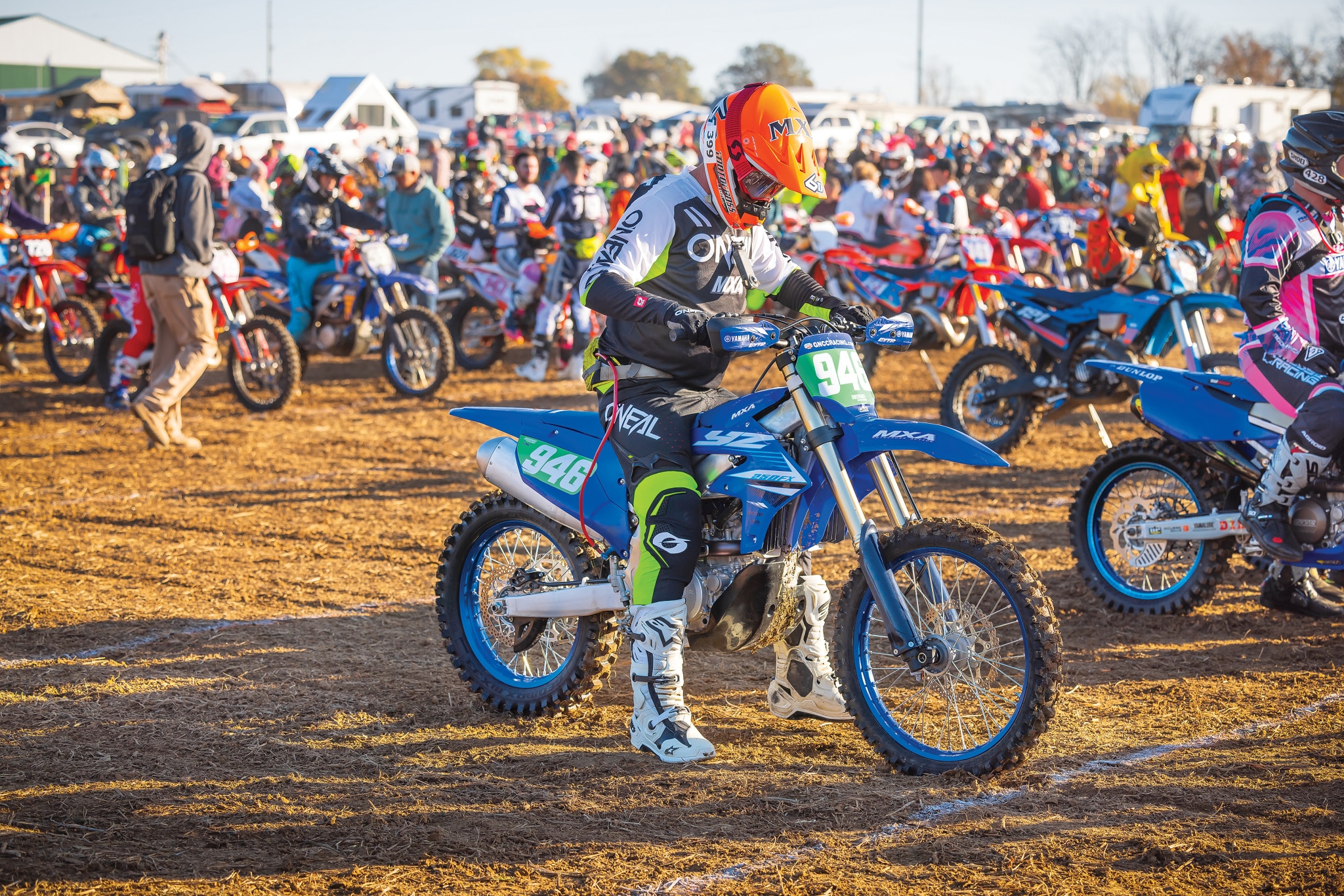 Josh Fout (946) practicing his dead-engine starts.
Josh Fout (946) practicing his dead-engine starts.
Never thinking I would have the opportunity to race a GNCC, I didn’t have any expectations. I do occasionally follow the GNCC series, and I know that Ironman is not the best course, but it is absolutely the most popular. I have been to a lot of AMA Nationals as Josh Mosiman’s mechanic, but I have never seen as many campers, pit vehicles and people as I did at the Ironman GNCC. It has the feeling of an AMA National with designated pro pits, fried-food boulevard, event T-shirt lane, intoxicated groups of friends, and little kids riding wheelies in the pits. The main difference is you don’t need a pit pass or any fancy wristbands; you can go anywhere on the track at any time.
We arrived at Ironman Friday morning to watch the quad race and ride electric bicycles around the track, since there are no practice sessions or sight laps before your race. Trevor Nelson and I got bored watching the quads through the flatter sections and decided to head to FMF Hill, the steepest climb for the quads. We followed the herd of people through the woods to the hill-climb, then huddled in with the crowd. Seconds later, Ryan Villopoto raced his quad within inches of us up the steep hill. Trevor and I then realized we were on the 100-foot-wide portion of the racetrack with 200 other people cheering the racers on.
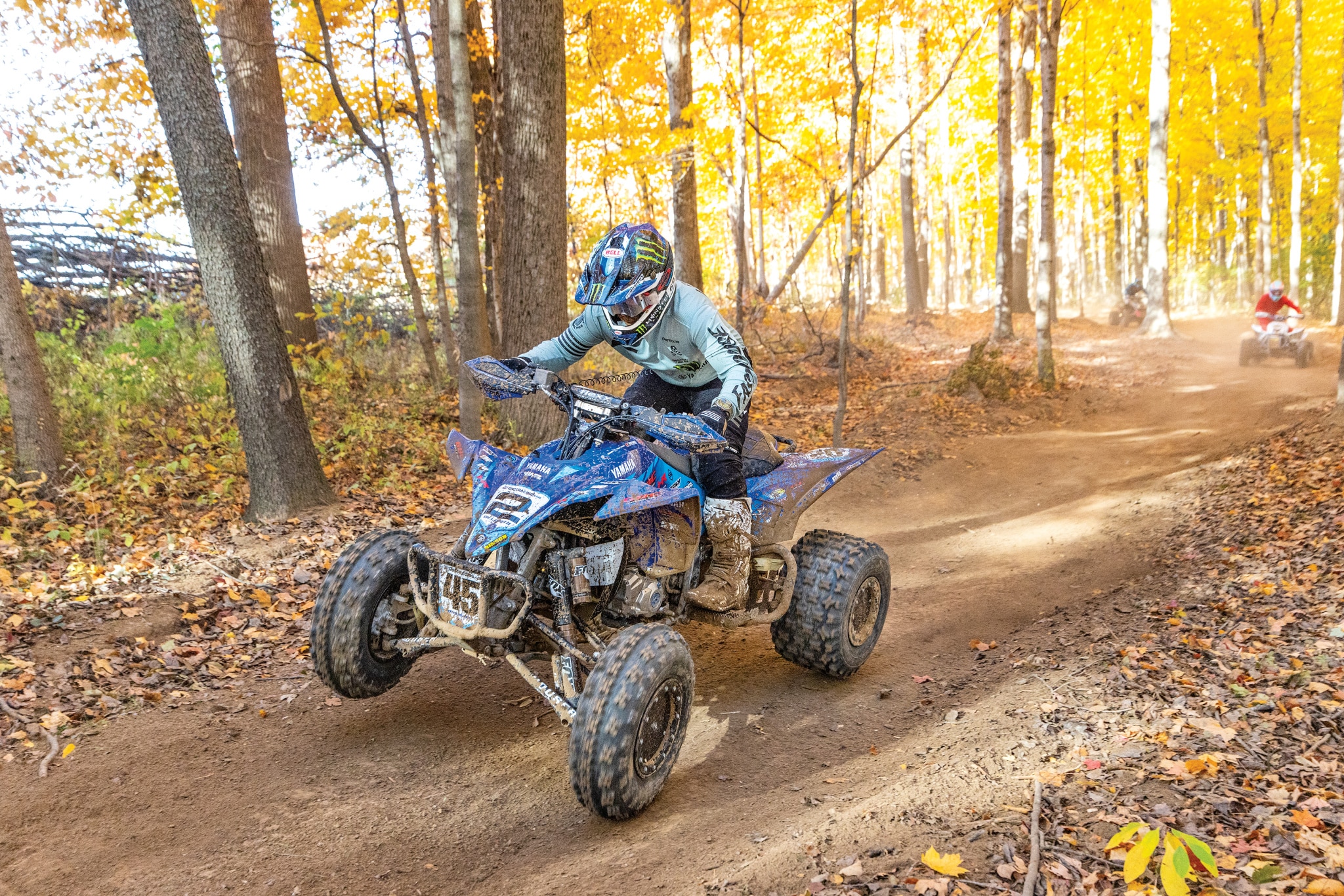 Believe it or not, Ryan Villopoto raced the Quad class.
Believe it or not, Ryan Villopoto raced the Quad class.
I race a ton of West Coast off-road races and love trail riding through rocks, so I wasn’t nervous about racing and thought I would do well racing through the woods of Ironman. Yamaha signed me up in the Industry class, and I thought to myself, “Shoot, I should do pretty well.” Then I checked the entry list and saw a few interesting names: Marvin Musquin, Ryan Villopoto and Phil Nicoletti. Have you heard of them? I had no expectations of winning, but seeing those names, I thought, “Look for my name in the back half of the results!
Fortunately for me, those guys didn’t want to start in row 9 of 20 with me and eat dust all race, so they moved up to the Sportsman A class (row 2). Before the race, I interviewed Randy Hawkins, team manager of AmPro Yamaha. I asked him for tips to help me race this track. Randy responded, “Stick to the insides on the corners. You never know what’s in the silty berms.” The day before, I watched the quads push every ounce of good dirt to those outside berms, and I thought, “What does he know?”
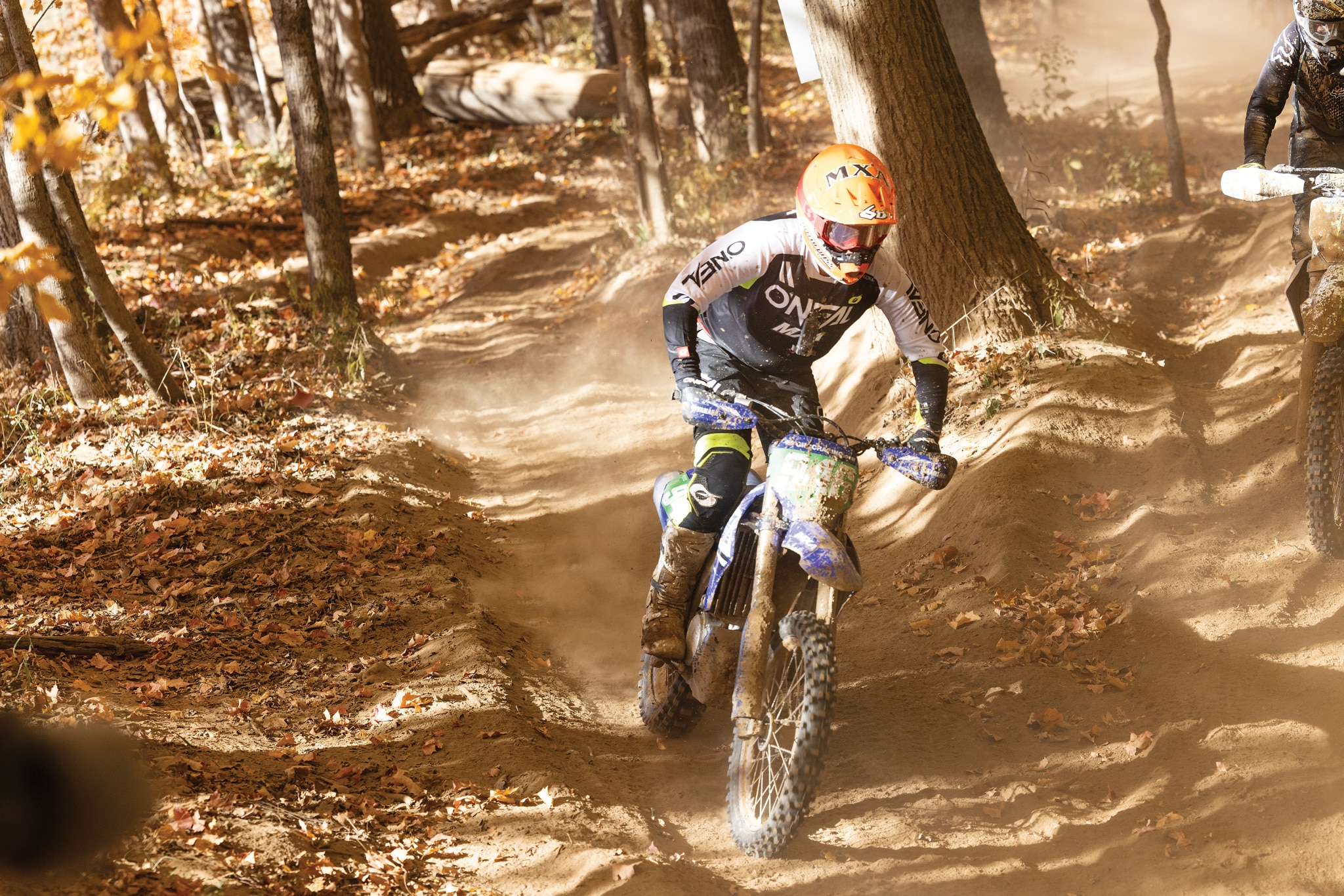 Josh Fout is a veteran of West Coast Grand Prix racing, but he loved riding in the Indiana woods.
Josh Fout is a veteran of West Coast Grand Prix racing, but he loved riding in the Indiana woods.
On the starting line, everyone asks, “Are you starting in gear?” I normally start in gear on 450s, but I had trouble getting the YZ250FX to start quickly for me in gear, so I went for the safer route. I started in neutral because I knew it would start easily, and then I clicked up to second gear as fast as possible. This resulted in a mid-pack start. I used some first-lap intensity to get back near the leaders and latched on to one of AmPro Yamaha’s amateur riders who helped tow me around the track and showed me the good lines.
The course at Ironman was 12 miles long, resulting in 30-minute lap times. As long as I didn’t get lapped by any of the Pro Women starting on row one, I would get in four laps in this two-hour-long race. Laps one and two for me were a trail ride, trying to learn the track and the YZ250FX. Finding a flow and speed for the final two laps was difficult. Starting on row nine, I was racing into the rows ahead of me on the first lap.
 When they played the national anthem before his race, Josh Fout lit up.
When they played the national anthem before his race, Josh Fout lit up.
On the starting line, Trevor told me, “Make sure you rev your bike and yell at the guys to get out of your way.” I thought to myself, that’s not very nice, but okay! This is also where Randy Hawkins’ tip came in very handy. It helped me explore the course more to find better lines that were smoother and get around lappers much easier. Near the end of lap two, I had revved at so many people to get around them that I thought there was no way this motorcycle was going to have enough fuel to make it back to the pits. Luckily for me, the 2.1-gallon tank got me through another whole lap. With the course being so long, every lap felt like a new track just because I didn’t see the same section very many times. This made it very easy for me to keep pushing hard through the two-hour race. Also, riding through the pit area and seeing Yamaha’s entire crew cheer me on was a major bonus for me!
At the end of the third lap, I stopped in the pits for goggles and fuel. At this point, I was still feeling good and was ready to keep pushing forward. I asked Yamaha’s Steven Tokarski, “White flag, yeah?”
He replied, “Yup, go get it!” That gave me the mental boost to want to keep pushing. About four miles into lap four, things started to change for me. My legs were getting tired. My mind was getting tired, and I was starting to make mistakes on the track. Fortunately, I didn’t have any tip-overs or big crashes on the last lap, because that would have put the nail in the coffin for me wanting to finish strong. I was smiling ear-to-ear for the entire two hours. Racing through the woods of Indiana was miles more fun than I thought it would be!
“ON THE STARTING LINE, TREVOR TOLD ME, ‘MAKE SURE YOU REV YOUR BIKE AND YELL AT THE GUYS TO GET OUT OF YOUR WAY.’ I THOUGHT TO MYSELF, THAT’S NOT VERY NICE, BUT OKAY! THIS IS ALSO WHERE RANDY HAWKINS’ TIP CAME IN VERY HANDY.”
Crossing the finish line at two hours and 14 minutes, I felt extremely happy and ready for some good old Midwest fried food! I was very pleased with my results, finishing fourth in the Industry class only nine minutes behind AMA Pro Justin Starling (who won the Industry class) and finishing 73rd overall out of 731 riders who were all on the track at the same time.
After this race, there is one thing I can put on my resume that our other test riders can’t: I beat Marvin Musquin! Okay, I’ll be honest. I only got ahead of Marvin because he bobbled and clipped a tree, resulting in a DNF, but, hey, a win is a win!
Overall, I can tell you this should be a bucket-list event for anyone who wants to experience what a GNCC has to offer. From the atmosphere and camaraderie off the track to the racing conditions on the track, this experience was second to none. I have to give a big thanks to the entire Yamaha media team and AmPro Yamaha for treating Trevor and I so well and letting us hammer their brand-new motorcycle over a couple days of riding. Most important, a thank you to Josh Mosiman and Jody Weisel for sending me to Indiana alongside Trevor to represent MXA. Hey, Mosiman, where can I go next?







Comments are closed.